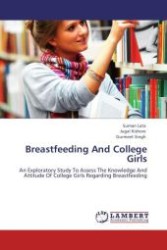Contents
SECTION 1: Sepsis Diagnosis and Management
1. Precision Medicine in Septic Shock
2. Optimal Blood Pressure Target in Patients with Septic Shock
3. The Surviving Sepsis Campaign Guidelines in 2022: What is New and what has Changed?
4. Individualizing Hemodynamics in Septic Shock
5. Adjunctive Therapies in Sepsis: Current Status
6. Refractory Septic Shock: What are the Options
7. Steroids in Sepsis and Clinical Outcomes
8. Candida auris: Detection, Prevention, and Management
9. Empirical Antifungal Treatment: Is It Justified?
10. Role of Steroids in Severe Community acquired Pneumonia
11. Procalcitonin: Can It Differentiate Bacterial versus Fungal Infection
SECTION 2: Antimicrobial Therapy in ICU
12. Optimizing Antimicrobial Dosing in the Intensive Care Unit
13. Antibiotic within 1 hour: Should this be Applied to all Patients with Sepsis?
14. Dark Side of Antibiotics
15. Optimal Duration of Antibiotic Therapy
16. Cefiderocol: Is this the Answer to Multidrug-resistant Gram-negative Infection?
SECTION 3: Respiratory Critical Care
17. Management of Pneumonia in Intensive Care
18. Reverse Triggering during Controlled Ventilation: A Frequent Dysynchrony with Various Consequences
19. Use of Multiplex Polymerase Chain Reaction in Pneumonia
20. Management of Complicated Pleural Effusion
21. Hepatic Hydrothorax
22. Submassive Pulmonary Embolism
23. Role of Magnesium in Respiratory Failure
24. ARDS in Children: How is it Different?
25. Safe Tracheal Intubation in Intensive Care Unit
26. Lateral Positioning: Does it Work?
27. Dyspnea in Patients on Invasive Ventilation: Clinical Impact
28. Complications of Noninvasive Ventilation Failure
SECTION 4: Mechanical Ventilation
29. Setting Optimum PEEP
30. Open Lung or Keep Lung Closed: Which Strategy to Choose?
31. Driving Pressure or Mechanical Power: Which One to Monitor?
32. Measuring Respiratory Drive and Muscle Effort
33. Oxygenation Targets in Mechanically Ventilated Critically-ill Patients
34. Ventilatory Ratio: A New Monitoring Tool
35. Helmet NIV: Is it a Game Changer?
36. Electrical Impedance Tomography: Current Application
37. Automatic Tube Compensation: Does it have a Role?
38. High-frequency Oscillatory Ventilation in Pediatric Acute Respiratory Distress Syndrome
39. Noninvasive Ventilation in Pediatrics: Current Status
SECTION 5: Cardiovascular Critical Care
40. Crystalloid Resuscitation: Finding the Balance
41. Artificial Intelligence Tools to Optimize Hemodynamics in the ICU
42. Aggressive or Restrictive Fluid Resuscitation
43. Predicting Hypotension: Is It Useful?
44. Vasopressors: How Early?
45. Myocardial Injury after Noncardiac Surgery
46. Use of Vasopressin during Cardiac Arrest
SECTION 6: Echocardiography and Ultrasound
47. Advances in Intensive Care Unit Echocardiography
48. Transesophageal Echocardiography: Is It Preferable in the Intensive Care Unit?
49. ECHO Features of Pulmonary Hypertension and Increased Left Atrial Pressures
50. Role of Echocardiography in Shock State
51. Use of Echocardiography in Assessing Fluid Responsiveness
52. Venous Excess Ultrasound Score (VExUS)
SECTION 7: Nephrology, Fluids, Acid-Base Balance and Electrolytes Balance
53. Fluid Management in Acute Kidney Injury
54. Sepsis-associated Acute Kidney Injury: Common but Poorly Understood
55. Delayed versus Very Delayed Renal Replacement Therapy
56. Plasma Exchange in Intensive Care Unit: Current Status
57. Acute Kidney Injury Care Bundle
58. Biomarker-driven Therapy in AKI
59. How to Approach Dyselectrolytemias in a Patient on CRRT?
SECTION 8: Neurocritical Care
60. Prognostication in Neurocritical Care
61. Nonconvulsive Status Epilepticus
62. Early Detection of Intensive Care Unit-acquired Weakness
63. Personalized Hemodynamic Management in Neurocritical Care
64. Extracranial Complications of Brain Injury
65. Ketamine: Current Status in ICU
66. Inhalational Sedation in Intensive Care Unit
67. Hypoactive Delirium: Detection and Management
68. Status Epilepticus: Anticonvulsants of Choice
SECTION 9: Gastrointestinal, Liver and Nutrition
69. The Microbiome
70. Personalized Glucose Control
71. Hypoxic Liver Injury and Management
72. Enteral Nutrition in Hemodynamically Unstable Patients
73. Problems of Overfeeding
74. Protein or Calories—Which is More Important?
SECTION 10: Trauma
75. Role of Tranexamic Acid in Trauma: When and where?
76. REBOA in Trauma
77. Transfusion Triggers in Trauma Shock
78. Rhabdomyolysis
SECTION 11: Toxicology
79. Paraquat Poisoning: Current Status
80. Methemoglobinemia
SECTION 12: Oncology and Hematology
81. Intravascular Hemolysis
82. Cytokine Storm and Hemophagocytic Syndromes
83. Pulmonary and Neurological Complications and their Management in Immune Cancer Therapy
84. Superior Vena Cava Syndrome: Approach to Management
85. Hyperviscosity Syndromes
SECTION 13: Medicolegal Issues and End-of-life Care
86. Palliative Care in the Intensive Care Unit: Is It an Elusive or Essential Goal?
87. Care of Elderly in Intensive Care Unit: Special Issues that Need to be Addressed
88. Feeding and Antibiotic Use in End-of-life Care: Is It Justified?
89. Communication in the ICU
90. Breaking Bad News to Children
SECTION 14: Clinical Research Methodology
91. Understanding Bayesian Analysis
92. Platform and Adaptive Trials
93. Data Science Implementation in Intensive Care Unit
SECTION 15: Obstetric Critical Care
94. Complicated Tropical Fever
95. HELLP Syndrome
SECTION 16: ICU Organization/Quality of Care
Section Editors: BK Rao, Palepu B Gopal
96. Smart ICU: The Era of Safety and Precision in ICU
97. Post-traumatic Stress Disorder in Patients and Family Members of ICU Patients
98. Cost Containment in the ICU
99. Simulation based Training in ICU
100. ICU Quality Indicators in Resource-limited Setting
SECTION 17: Extracorporeal Life Support
101. Extracorporeal Life Support: Does it Improve Outcome in Septic Shock?
102. Certifying Brain Death on Extracorporeal Membrane Oxygenation
103. How to Wean off ECMO
104. Thrombocytopenia in ECMO Patient: Troubleshooting
SECTION 18: Miscellaneous
105. Post ICU Care in India: An Unmet Need
106. Preventing Post-transplant Respiratory Failure
107. Human Mesenchymal Cell Therapy in Critically Ill: An Update
108. Withdrawal Syndromes in Intensive Care Unit: Recognition and Management
109. Zentensivism: A Holistic Approach to the Art of Caring
110. Gender Balance in the Intensive Care Unit: Where are We Today?








